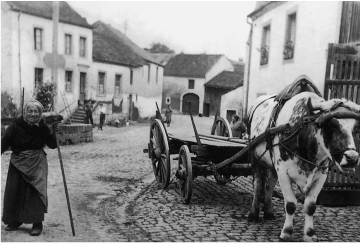 The village of Senningen, situated in a very charming and beautiful landscape, could keep its typical villager character over all these years. Many buildings partly renovated are dated from the older times.
The village of Senningen, situated in a very charming and beautiful landscape, could keep its typical villager character over all these years. Many buildings partly renovated are dated from the older times. 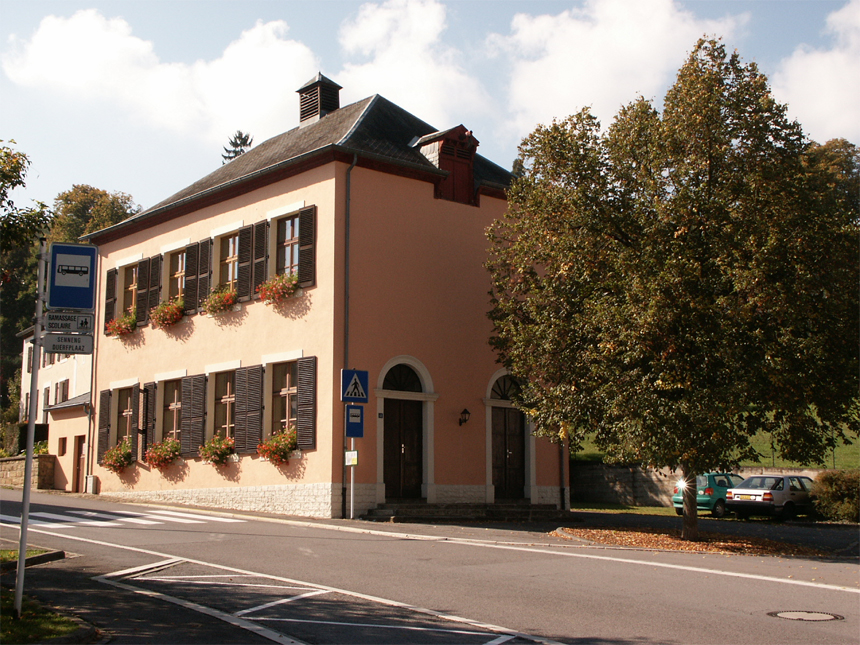 A good example is the old school, which had been opened in 1848 and constructed on the foundations of the dismantled chapel of Senningen (dated 17th century probably). On the front side of the school, at the corner of
A good example is the old school, which had been opened in 1848 and constructed on the foundations of the dismantled chapel of Senningen (dated 17th century probably). On the front side of the school, at the corner of 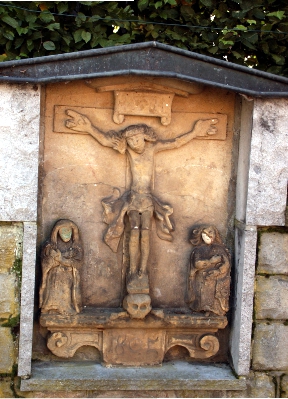 the Freylinger house, had once been a very old milestone in form of a crucifix, showing the crucifixion. This devoted stone wears the inscription of the year 1805 and a special place has even been set up for it in the “rue de la Montagne”. The “Schanzenhaus”, the near old ban mill and the dairy building are all symbols of a typical villager place. In the “rue du Château” is situated the old washhouse, built in the thirties of the 20th century, right in the middle of the village, on the foundations of an old sawmill.
the Freylinger house, had once been a very old milestone in form of a crucifix, showing the crucifixion. This devoted stone wears the inscription of the year 1805 and a special place has even been set up for it in the “rue de la Montagne”. The “Schanzenhaus”, the near old ban mill and the dairy building are all symbols of a typical villager place. In the “rue du Château” is situated the old washhouse, built in the thirties of the 20th century, right in the middle of the village, on the foundations of an old sawmill.
The Senningen Mills
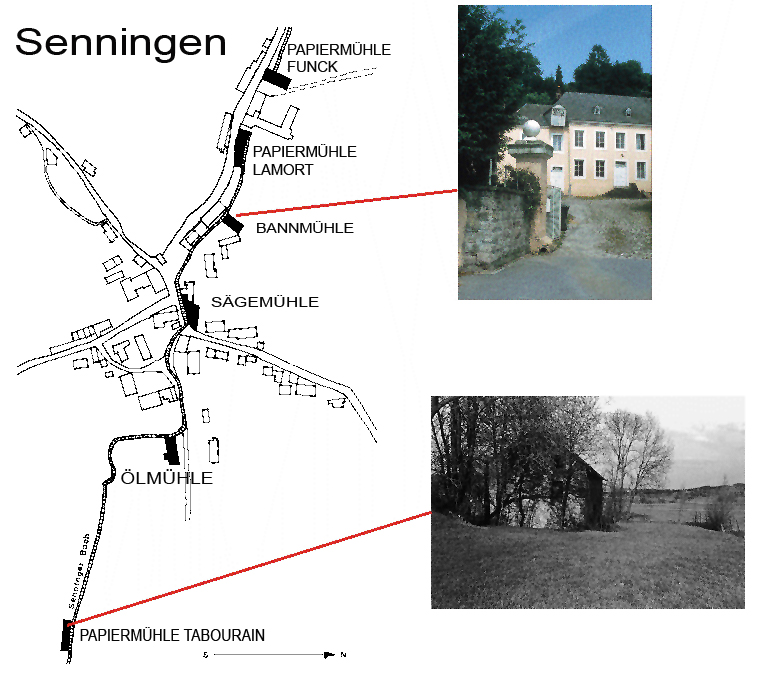 Because of its attractive position at the foot of the famous Luxembourg sandstone layer, from where many springs are gushing, the community of Niederanven has always been rich in local mills, using this geological advantage.
Because of its attractive position at the foot of the famous Luxembourg sandstone layer, from where many springs are gushing, the community of Niederanven has always been rich in local mills, using this geological advantage.
At the beginning of the 18th century, twelve mills were active here during approximately twenty years. From these 12 only three buildings have vanished. In Senningen 6 mills were active, using the river “Senningerbach”, crossing the village from the west-eastern side. There were 2 papermills called Lamort, Funck and Tabourain (locally known as “Piersmillen”), 1 oil mill, 1 sawmill and one ban mill. This ban mill has once been a cereal mill, to which had been added an oil mill in the 19th century. The ban mill is known as one of the oldest mills in Luxembourg.
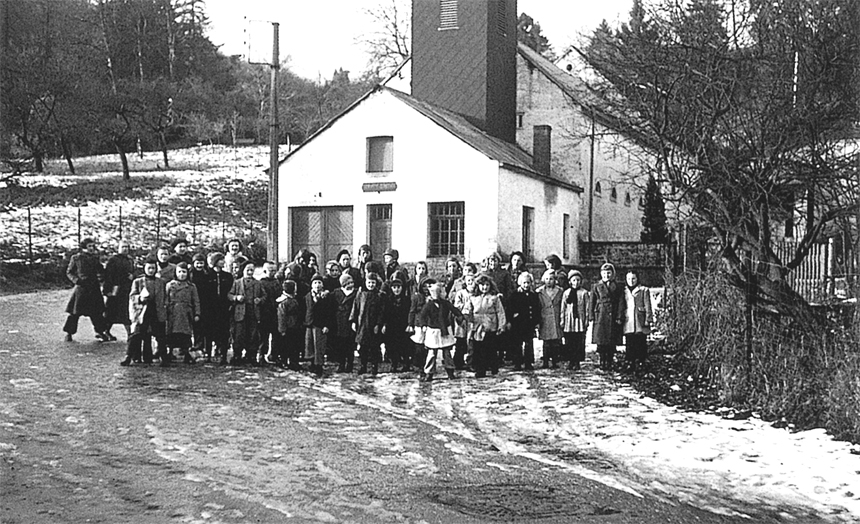
The pupils from Senningen in front of the old dairy building.
